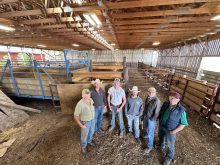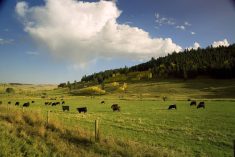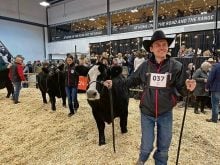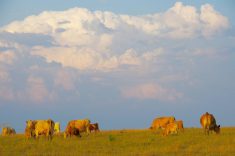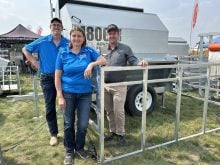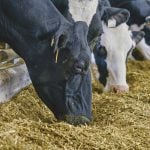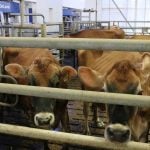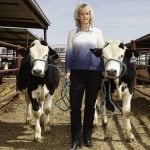Limiting the use of growth promotants for raising calves is easy. Just stop using them, accept that you will lose efficiencies, and concentrate on capturing every other advantage.
Limiting the use of antibiotics is another story.

David Saretsky, who raises cattle and runs a cattle marketing company, Cantriex Livestock, with his family near Ponoka, Alta., was on hand at the University of Calgary’s Beef Cattle Conference to give an overview of that story.
Much of his knowledge of what it takes to be successful raising calves for the natural beef market has been gained through his experiences working closely with clients who sell and buy calves for this market and during his time as cattle manager with One Earth Farms.
“I think people make the biggest difference to success raising cattle in this type of system. You can use the best protocols, technology and genetics, but if you don’t have the right people you are destined for failure,” Saretsky says.
Read Also
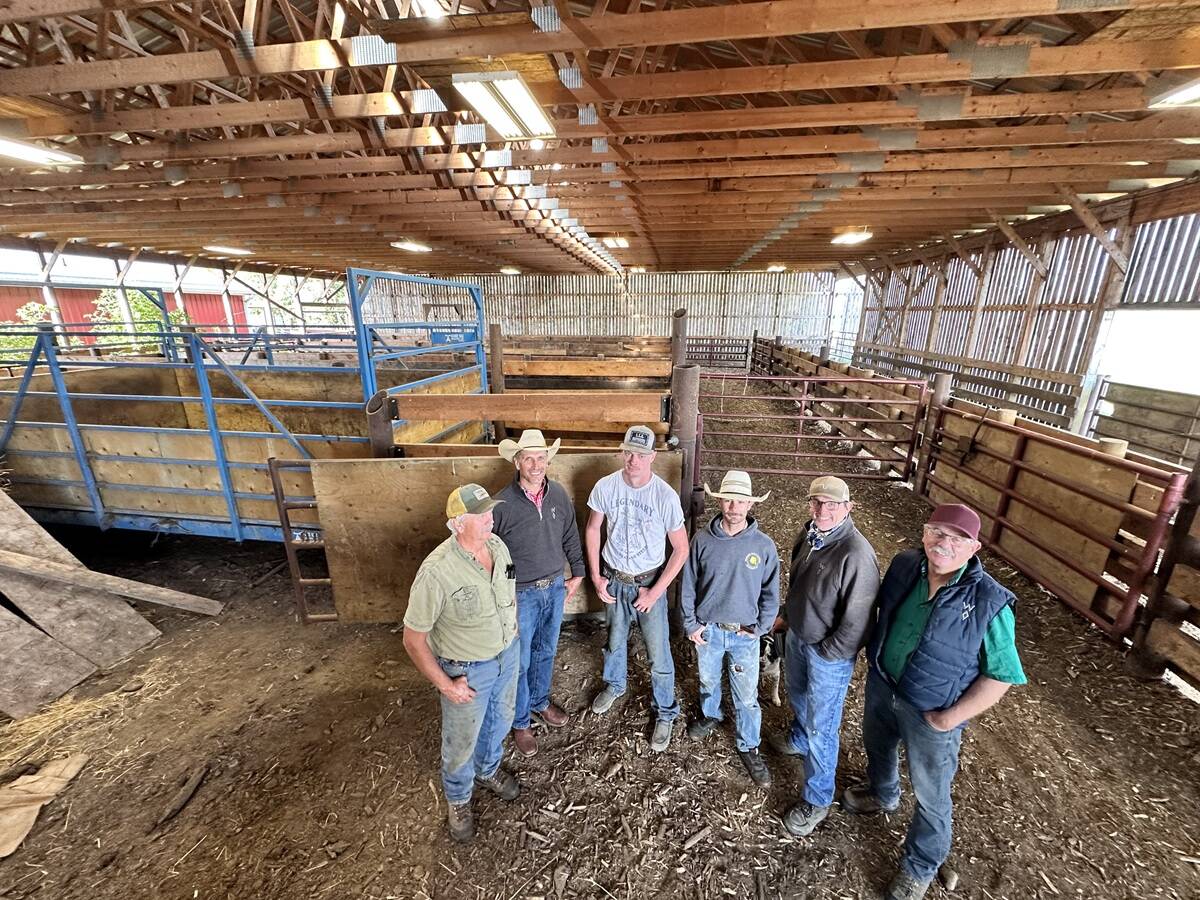
Farm families work together to graze cropland with cattle in the fall
These Alberta farm families have separate operations, but work together to manage their land
It’s fairly easy to surround yourself with good people, but some may not be the right fit for a natural beef system and it can be really tough to let them go. If you don’t, though, they will cost you efficiencies and weigh heavily on your bottom line because calves that end up having to be treated with antibiotics for animal welfare reasons fall out of the system. Premiums are lost when they have to be separated, managed and marketed apart from the rest, he explains.
People across the natural beef chain have to be committed to the program, starting with the ranch families supplying the feeder cattle or retaining ownership to finish. They have the greatest impact on total production within the system because without calves there couldn’t be a program.
There are three types of ranchers he sees having success raising calves for natural beef programs: those who truly believe in their hearts that this is the best way; those in it for the premiums because they feel they can raise cattle efficiently enough to benefit; and those who want to know where their beef ends up.
Next are the feedlots. Their role is critical in ensuring the quality of the calves going to the packer.
Saretsky says it takes a special feedlot with everyone having a thorough understanding of the protocols to do everything effectively because there are several hoops to jump through that most feedlots don’t have to deal with. One of the biggest is audits and feedlots need to bring their A game because if they fail, the program could collapse.
Commitment has to extend to consultants, veterinarians, nutritionists and your feed company, to ensure that the products recommended or supplied fit with the program’s production and health protocols.
The people who run the companies that market natural beef shouldn’t forsake the power of local knowledge when they lay out their protocols.
“I have good working knowledge of raising cattle in central Alberta, but I learned very quickly that I don’t know the ins and outs of raising cattle in Dawson Creek, Medicine Hat or over in Foam Lake, Saskatchewan. Weather conditions vary and influence how we manage cattle, so protocols need to reflect the local area and they need to be flexible,” Saretsky explains.
Having a hard and fast shipping date, for example, can be disastrous if a storm hits, he says, recalling a delivery of newly weaned calves that were loaded in the rain, got stuck in a storm and never did fully recover.
Reducing stress should be the main focus when designing the protocols because stress is the biggest cause of sickness and, therefore, the need to use antibiotics.
Natural beef programs are about limiting the use of antibiotics. It’s impossible to stop using them altogether because sick animals need treatment regardless of the type of production system.
“Every major interaction between man and cattle causes some degree of stress, so this is where input from everyone working with the cattle becomes all that much more important. If we can reduce stress, we can minimize antibiotic use and improve almost every measurable aspect of this type of production system, including treatment rate, death loss, rate of gain, conversion,” he explains.
Weaning, transport and muddy pens are major stressors and in his view the highest potential to cause sickness.
Minor stressors such as processing and vaccinating, moving cattle, ration adjustments and exposure to new cattle can reduce efficiency for a short time but when added together could lead to sickness and treatment.
Real-world management
Plan, plan and plan some more on every aspect of how the calves will be managed. At the same time, plan to be flexible enough to adjust to whatever the day brings your way.
Never hesitate to cancel a plan if, for instance, the weather looks bad, the pens are too muddy, the cattle don’t look right or your hired man doesn’t show up.
Know your limits because biting off more than you can chew will hurt you financially. Processing 1,000 head a day in a conventional program may be doable, but when trying to limit the use of antibiotics it would spell disaster. He suggests processing 1,000 head a week might be an achievable goal.
“Without question, weaning is the most critical juncture in this type of production system because every stressor can occur during weaning,” Saretsky says.
Separating activities that cause stress helps to keep them from piling up. He believes keeping calves on the ranch for as long as possible after weaning is one of the best strategies. Not only does staying at home limit exposure to bugs, it allows them to rest up before they go on the truck. Transport compounds even minor stresses.
The planning for weaning needs to start long before the big day. It’s a time for pre-weaning vaccinations and exposing calves to dry feed. It does work.
“Vaccination is emphasized in a natural beef system because it reduces the number of bugs calves are exposed to. We vaccinate at branding and again two to six weeks before weaning, but it’s important for custom backgrounders and feedlots to stay on schedule,” he emphasizes.
“We also expose calves to a total-mixed ration for at least two weeks before weaning to give the rumen time to adjust while calves still have access to pasture and milk.”
Let the mother cows teach the calves that something good will happen when the feed truck rolls by. Calves learn from their mothers all the time — from hiding in the grass to avoiding predators, to going to the trees during a storm, to grazing habits. There’s no mistaking bunk-broke calves when they arrive at a feedlot, he says.
He suggests spreading feed on the ground, providing it’s good hard ground, when you first introduce calves to dry feed. This limits competition and the chance of calves getting hurt fighting with the cows over feed on the bunk line.
Some people might think that introducing calves to an automatic water bowl before weaning is a minute detail, but calves that aren’t drinking aren’t eating and their chances of getting sick and needing treatment will go up.
A water bowl can be a strange contraption to calves that spend their first six months drinking from creeks and ponds.
Saretsky recalls hauling snow from the rink after the Zamboni cleaned the ice for a group of cattle from the Aleutian Islands that had never seen a water bowl or trough, but they did know how to eat snow. Eventually they caught onto the water bowl.
His final tip is to fenceline wean if you have the facilities to do it. Giving the calves the benefit of the sensory interaction with their mothers works wonders to ease stress, but if you have terrible fences, it will create more hassles than benefits.
The best setup he has seen had calves in a feedlot pen with the cows set up in an area alongside or behind.
“Weaning really is the battle that wins the war in this type of system,” he stresses. “If weaning goes well, chances are that backgrounding will go well, and if backgrounding goes well, finishing will probably go well. Mess up at weaning, and chances are your daily gains in the lot will be off, meaning missed shipping dates or lighter carcass weights.
“Little things can’t be overlooked because by default you lose efficiencies by not using growth promotants and antibiotics. You need to do everything else very well to stay competitive. Overall, there is power in simplicity and getting back to the basics of good animal husbandry. There is power in having a good plan, but maintaining flexibility, and the power of having good people is absolutely crucial.”




